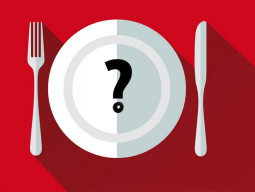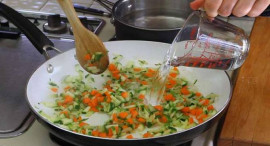
We’re already aware that snack foods, such as nimco, chilli chips, namak paaray, pakoras and samosas pack a lot of namak. But even if you don’t eat any of the above-mentioned delicacies, you may be consuming a high-sodium diet without realising it.
Many foods you wouldn’t expect are awash in salt, including everyday sandwiches, biscuits, and even paneer. Most people should stick to less than 2,300 mg of sodium per day (those with high blood pressure should limit it 1,500 mg). As compiled from Women’s Health and bodybuilding.com, read on for sneaky sources of salt to watch for.
Sauces

It comes as no revelation that marinades, achaar and salad dressings contain salt, since they taste salty. A two-tablespoon serving of salad dressing or barbecue sauce may pack 300 mg of sodium, which is up to 10 to 15% of your day’s allowance — and you often use two servings or more on your food. Same with marinades, which can pack nearly a fifth of your limit in just one tablespoon — which isn’t even enough to cover one chicken thigh. But it may surprise you just how much salt our local sauces or chutneys comprise. Packaged imli chutney or the raaita that is served with your tikka are almost always whirling in salt — so beware. Control sodium by making dips and chutneys at home.
Health first: The food route for new moms
Paneer

Cottage cheese, locally revered as paneer is an excellent source of calcium and protein. This desi staple packs a monstrous 28 grams of protein for only 160 calories. The melancholy catch: a one-cup serving can contain almost 1,000 mg of sodium, which sums up to 40% of what you’re supposed to have in an entire day. Yogurt, which contains just 60 mg of sodium per serving, is a worthy high-protein substitute — wish it could be substituted in paalak paneer but we’re not that fortunate.
Baked goods

Doughnuts, cakes, patties, rusks, lemon tarts, biscuits — of course we know that bakes eateries are jam-packed with sugar and carbs, but did you realise that they’re also brimming in salt. One doughnut, for instance, supplies you with over 200 mg of sodium, which comes down to about 10% of your day’s limit. Packaged baked goods rely on sodium as a preservative in addition to any salt used during baking. These treats already have a lot of negative things going for them, such as tonnes of calories, fat, and needless carbs so might as well keep their consumption to a minimum — or bake cupcake at home and hold back on the salt, using just a pinch to enhance the sweet flavour.
Cooking with tap water and salt can make food toxic: Study
Soup

A bowl of simmering hot soup makes a filling, healthy lunch. What’s outrageous is just how much salt most soups contain, especially the canned soups on supermarket shelves and the ones serves at our favourite Chinese restaurants. Though a bowl of chicken corn soup might be less than 300 calories, a serving can contain half of your sodium limit for the day. After years of eating super-salty soup, you may think it tastes bland, warns says LeeAnn Smith Weintraub, a nutrition consultant in Culver City, California. Dress it up with freshly cracked pepper, fresh herbs, or a sprinkle of Parmesan cheese. If you’re in the mood for expressing yourself, such as writing, prep a hot bowl of daal at home — the ultimate comfort soup.
Hot chocolate

It’s chilly and what could be better than downing the ultimate cold slasher. The warming, decadent beverage is a fantastic approach to get your chocolate fix for few calories — there are just 80 to 100 in a packet of mix. But one serving of the lip-smacking drink can also contain 7% of your recommended daily intake of sodium. If you’re on a reduced-sodium diet for any reason, then one packet will be over 10% of your quota. Don’t skip it altogether — our winters are brief and it only makes sense to indulge every now and then — but stick to no more than twice a week. Also, have extra glasses of water on the days you overdo on the salt shaker.
5 tips for a snack that packs a punch
Sandwiches

Who would have thought our beloved plate staple could be such a major player in our daily sodium intake? Most commercial breads supply an astonishingly high amount of sodium — 100-300 milligrams per slice. Your lunch sandwich could easily provide you with a quarter of the daily recommended amount — and that’s not even counting your preferred fillings! One reason manufacturers make their bread so salty is that it works as a preservative to help extend shelf life. Because the salt is baked into the bread, your morning toast won’t taste salty the same way potato chips do where the salt is on the surface. And don’t assume that whole-wheat versions are any less damaging. Use lower-sodium options like pita bread, and for fillings, fresh veggies and homemade meat filling, such as shami kebabs.
Published in The Express Tribune, December 17th, 2015.
Like Life & Style on Facebook, follow @ETLifeandStyle on Twitter for the latest in fashion, gossip and entertainment.




























































COMMENTS
Comments are moderated and generally will be posted if they are on-topic and not abusive.
For more information, please see our Comments FAQ